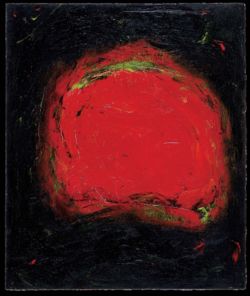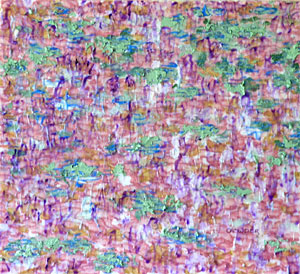 Synesthesia is a neurological condition in which two or more bodily senses are paired. Individuals with this condition are, for example, able to 'hear' colours or 'see' sounds. Subsequently, many synesthetes use their experiences to assist in their creative process.
Synesthesia is a neurological condition in which two or more bodily senses are paired. Individuals with this condition are, for example, able to 'hear' colours or 'see' sounds. Subsequently, many synesthetes use their experiences to assist in their creative process.Synesthetic art is qualitatively and aesthetically distinguished from more traditional forms of art. Interestingly, there has been no shortage of synesthete artists. Notable examples include Vladimir Nabokov, Nikolai Rimsky-Korsakov, Jean Sibelius, Duke Ellington, Franz Liszt, and more recently Richard D. James (aka Aphex Twin).
Duke Ellington once said, "I hear a note by one of the fellows in the band and it’s one color. I hear the same note played by someone else and it’s a different color. When I hear sustained musical tones, I see just about the same colors that you do, but I see them in textures. If Harry Carney is playing, D is dark blue burlap. If Johnny Hodges is playing, G becomes light blue satin." And it was said of Franz Liszt that when he "first began as Kapellmeister in Weimar (1842), it astonished the orchestra that he said: 'O please, gentlemen, a little bluer, if you please! This tone type requires it!' Or: 'That is a deep violet, please, depend on it! Not so rose!' First the orchestra believed Liszt just joked; more later they got accustomed to the fact that the great musician seemed to see colors there, where there were only tones."
Synesthesia is not exclusive to artists, of course. Physicist Richard Feynman saw colored letters and numbers. He once said, "When I see equations, I see the letters in colors – I don't know why. As I'm talking, I see vague pictures of Bessel functions from Jahnke and Emde's book, with light-tan j's, slightly violet-bluish n's, and dark brown x's flying around. And I wonder what the hell it must look like to the students."
While neurotypicals are able to perceive and appreciate synesthetic art, their subjective interpretation of these works may not be entirely complete or accurate. Some synesthetes create art to convey the synesthetic experience, while others use their condition simply to create novel works of art that can only really be fully appreciated by themselves or other synesthetes. In this sense, their condition can be construed as a cognitive gift allowing for multi-sensory and cross-sensory artistic expression and interpretation. It is not inconceivable that future neurotechnologies may endow some willing neurotypicals with synesthete like capabilities so that they may partake in this type of art.
Here are some examples of visual art (at least to us neurotypicals) as expressed by the synesthete mind:





No comments:
Post a Comment